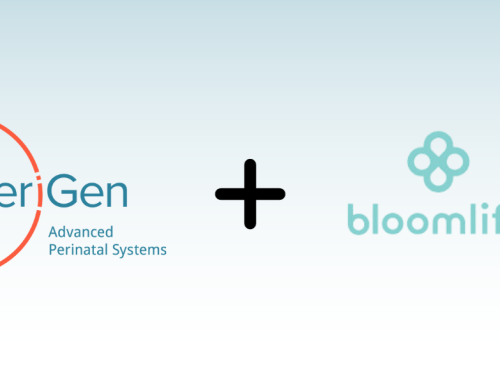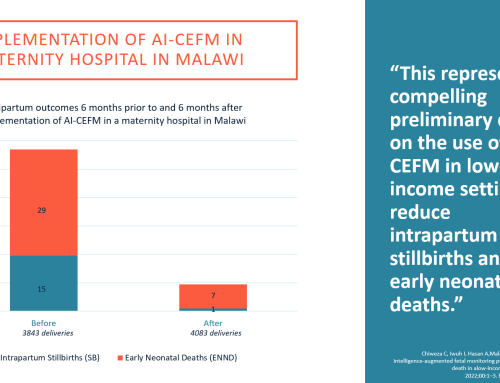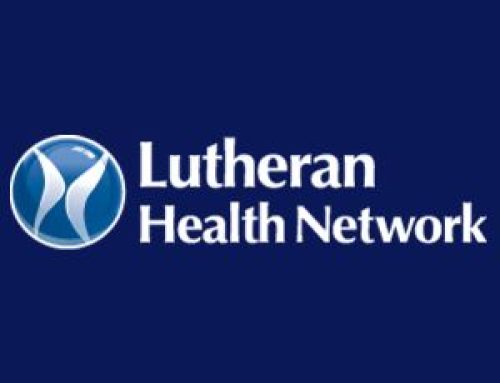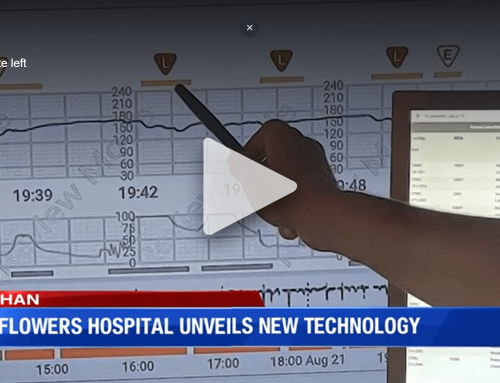
September 14th, 2013
By Mark Hagland
At Baystate Health, clinician and informatics leaders are moving forward in the elective early-term delivery area
The issue of unnecessary elective early-term deliveries of babies is receiving increasing attention in patient care organizations nationwide. This attention is not happening in a vacuum: an increasing number of reports and policy statements is backing up what has long been quietly understood among many clinicians: that many of the early-term deliveries are not only not medically indicated with regard to their timing, they can be detrimental to the health of babies and mothers.
For example, in June, the federal Centers for Disease Control and Prevention (CDC) reported that the total U.S. cesarean delivery rate reached a high of 32.9 percent of all births in 2009, having risen 60 percent from a rate of 20.7 percent of all births in 1996. Since 2009, though, that rate has remained unchanged.
Averting early-term births is a best practice that is actively being advocated by professional organizations involved in obstetrics, most notably the American College of Obstetrician Gynecologists (ACOG). Indeed, a joint March 2013 press release from ACOG and the Society for Maternal-Fetal Medicine (SMFM), noted that “The College and SMFM have long recommended that doctors not induce labor or perform cesareans before 39 weeks of pregnancy without a clear medical reason. A full-term pregnancy lasts 40 weeks. ‘Early-term’ deliveries are those that occur between 37 and 39 weeks of gestation.”
The March 21 press release noted that “Reducing the number of non-medically indicated early-term births and improving newborn outcomes is possible, according to The College and SMFM. Hospitals around the country have successfully lowered their rates of non-medically indicated early-term births by implementing policies to prevent them.”
One patient care organization in which active work to make such changes has been taking place is the four-hospital, Springfield-based Baystate Health.There, Andrew Healy, M.D., medical director of obstetrics, Daniel Grow, M.D., chair of the department of obstetrics and gynecology, and Peter St. Marie, the organization’s clinical research director, have been involved in groundbreaking work in this area. They have been leveraging PeriBirth EHR [electronic health record] solution from the Princeton, N.J.-based PeriGen, and have been using that data to optimize infant delivery at Baystate Health, where 45 physicians and 25 midwives perform 4,200 infant deliveries every year. Below are excerpts from the interview that Drs. Healy and Grow and Mr. St. Marie gave recently to HCI Editor-in-Chief Mark Hagland.
Can you share with me your overall strategy in pursuing this initiative?
Andrew Healy, M.D.: The background is that we certainly observed that babies were being delivered without a valid medical indication prior to 39 weeks; we also saw babies delivered after 39 weeks were being induced electively who weren’t favorable for induction, meaning that the mother’s cervix was closed. So often, the inductions of those patients would take more than one day—sometimes even three days—and many would fail, and they would have a cesarean section. And many of us have observed problems with the increase in c-sections across the country. And we’re also a teaching hospital, with both residents and medical students, so that element plays into the overall situation.
Daniel Grow, M.D.: And the problems with that are babies being born before they’re 39 weeks, and some of those babies go into the NICU [neonatal intensive care unit]. Furthermore, patients who are induced after 39 weeks’ gestation without a favorable cervix, spend a long time following induction, in labor, and often end up having a c-section. We found all those things unacceptable; so our goal was to eliminate uncalled-for inductions.
Healy: And in terms of process, we brought our faculty physicians and many community doctors into the process as well. And there have been statements from ACOG for more than 20 years, and evidence from recent publications around morbidity and mortality for these babies.
One of the things I’ve heard for years is that there is also a somewhat-hidden convenience factor for some of the physicians in this, having to do with disturbing their off-time with call or delivery.
Grow: You’re right about that, but some physicians will say, I’ve bonded with my patient and she wants me to be delivering while I’m on call or available. And sometimes there’s a reimbursement issue there, too, in terms of who gets paid for the cover delivery. So it’s complicated. But as the March of Dimes and ACOG and Leapfrog [the Leapfrog Group] have shown, babies are best delivered at term or when Mother Nature puts the mother into labor.
How did you reach consensus among all the physicians at Baystate for how to move forward with this?
Grow: Consensus is a strong word, right? So we had to show the doctors the data, and we showed that there were discrepancies in the induction rate between individual physicians and groups of physicians. So we shared the information with each group. There are four or five bigger groups, averaging about eight to 10 physicians each, here.
So you showed them the data in those groups, and got everyone to see what was going on?
Grow: Yes.
Healy: Yes, and there were marked differences between the groups.
So you had a discussion of the differences?
Healy: Yes, and because of Pete and because of PeriGen, we were able to review the inductions and determine whether the elective inductions were called for or not.
Peter St. Marie: So the baseline induction rate—any patient receiving pitocin—was about 16 percent. That figure represented all patients who received pitocin or induction, including for medically indicated reasons. The lowest group, two of them, had 16 percent receiving pitocin, and the highest rate was 40 percent. This is all patients receiving pitocin, either for medically justified reasons or for other reasons. So clearly, the 40-percent practices were performing non-medically indicated inductions. So Dr. Healy got the doctors together and said, let’s get together and define what “medically indicated” means, and it was us and the four leaders of the groups, plus anyone who wanted to join us. And we went diagnosis by diagnosis; there was some disagreement on different diagnoses, but Dr. Healy, through literature and skillful presentation skills, gained some consensus, and we narrowed it down to a list of reasons for medical indications. So we created a clinical pathway.
So to book an induction, the offices had to call a central scheduling office. And if they gave an approved medical indication for induction, they would book it. If they didn’t, they would have to call Dr. Healy directly. He’s a very nice guy; but he does have a backbone. So this was the basic plan. We’ve taken this a step farther since then, and now any patient who we discover is being induced without an approved medical indication, those charts are audited monthly, and if there’s a violation, that chart is sent to our peer review committee, where those charts are reviewed monthly, because some doctors have found a backdoor way to do that.
Healy: We went live in September 2011; and initially, I received a lot of phone calls. But as time has progressed and we’ve tracked the induction rate monthly, those phone calls have certainly decreased, and people have accepted the new policy. It’s not perfect, but I can tell you that many doctors are actually relieved about this, because the doctors can cite me or the hospital.
And so sometimes the convenience push is coming from the moms, too, of course?
Healy: Yes, and I’ll say that many of the pregnant moms simply don’t want to wait.
What is the rate now of early-term inductions that are not medically indicated?
Healy: The pre-39-week elective induction rate is now zero. And 40 percent was for all inductions in that group.
What percentage of the 40 percent figure of early-term inductions was not medically indicated, do you think?
Healy: I don’t have that number off the top of my head, but I suspect that it could have been half of that percentage, because I would guess that 20 percent were medically indicated. And I can add that when we looked at the numbers for the number we presented at ACOG, our elective induction rate was 6 percent and fell to 2 percent after we instituted the policy.
How long did it take to fall from the 6 percent to the 2 percent?
Healy: From January 1, 2009 to August 1, 2011.
So over two-and-half years?
Well, the post-policy period was actually form September 2011 to June 2012.
So that rate fell relatively quickly, then?
Healy: Yes, because these hard stops were put in place; if they didn’t satisfy certain criteria, they weren’t allowed to book the induction.
What is the core of what PeriGen does?
Healy: What PeriBirth does is it’s the EHR, which and allows us to track each delivery and induction.
St. Marie: And attempting a study based on the old paper records is incredibly time-intensive. Here, we can stratify all patient types and situations.
Grow: We can query the record for anything we want. The big advantage of having PeriBirth and any EHR, is that you can pull all the records quickly and in a systematic way. I pulled all the delivery reports for all the deliveries for the whole time period, and was able to pull that into some software and then analyze the data any way we wanted, and for even making the case at the beginning to even make the case for doing this.
What would you say to CIOs and CMIOs about how to help facilitate this kind of initiative?
Grow: From the clinical side, there are cases where they’re forced to enter data.
Healy: They’re forced to enter data into certain fields.
St. Marie: That’s a big part of getting complete data into the medical record. And the other big part of PeriBirth is, I can do a query of the database to look at all deliveries between any two dates, and can get all the information, basically.
Healy: And the physicians love that we can track things: how often are docs doing an episiotomy, or how often is pitocin being given? So we can track all things that are important to us, and can educate the doctors on things.
St. Marie: And it’s relatively easy for me to give Dr. Healy a timeframe, and to pull any kind of indicator, and can merge everything together and do an analysis on it.
Grow: So from a CQO type of perspective, we can create quality dashboards that are very specific and that save money and improve care, so that’s very valuable. So from a departmental perspective, we can run report cards, if you will, to drill down from who’s delivering excellent quality and who isn’t.
St. Marie: From the IT perspective, once we got the software, the codes able to run to do the analysis, we were able to reuse that every month, and we’re able to print out a monthly report that Dr. Healy presents at grand rounds, and that is re-created in comparison with previous months. And in a few hours, we’ve analyzed all the deliveries for the month, and have specifics on inductions, elective inductions, etc.; and the only way we’re able to do that is because we can query PeriBirth; and I use software that does ODBC queries, to talk to the server.
Grow: So what’s very useful are the quarterly visits from PeriGen that have a standard report of about 100 quality metrics that we can track internally, and so one of them is frequency of blood transfusion; another is frequency of third- and fourth-degree episiotomy; another is frequency of perfect documentation from our nursing team. So we get that quarterly and get benchmarking across every organization that uses PeriGen. They have approximately 400,000 deliveries in their database; I think there are about 30 other organizations using it.
This is part of the broader shift towards evidence-based, consensus-driven, medical practice, isn’t it?
Healy: I would agree that there’s definitely a movement towards evidence-based care, and that’s been going on for a while now. There are two things I would stress: first, you need to be able to establish the evidence, and systems like PeriBirth do that. And second, you need to be able to measure deviations against standards of care; and again, PeriBirth does that, and you need to be able to address who is deviating, and address that.
St. Marie: And PeriBirth is our inpatient OB EMR; and the hospital has a separate EMR for everyone else. That is not as easy to query, as the data in that database is not updated as frequently as the PeriBirth data. With PeriBirth, I can get data for patients still in the hospital and orders just placed. With the inpatient EMR, it’s nearly historical data, and requires a much more difficult, proprietary method. So that’s the great thing about PeriBirth for me; I can write a few lines of code to address a query, and have the information back to them within a half-hour.
Healy: And once an acceptable standard has been established, we can use PeriBirth for that purpose. What is the correct dosage for a particular medication in a particular situation, for example? Standardizing care is very important.
Grow: And in this study, putting this policy in place, hard stops for induction of labor, reduced our NICU admission rate significantly, for patients over 37 weeks gestation, from 3 percent to 2 percent, so a reduction of a third. So the NICU admission rate dropped by over a third in that group.
_________________________________________________
Source URL: http://www.healthcare-informatics.com/node/18500?page=0








